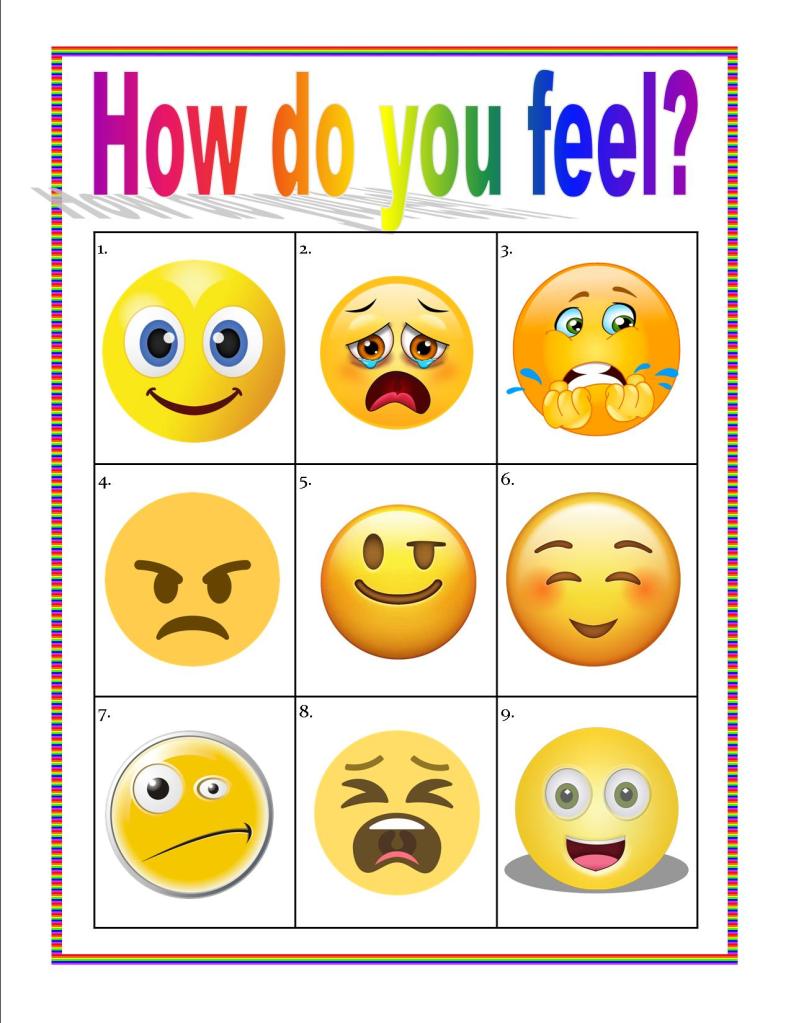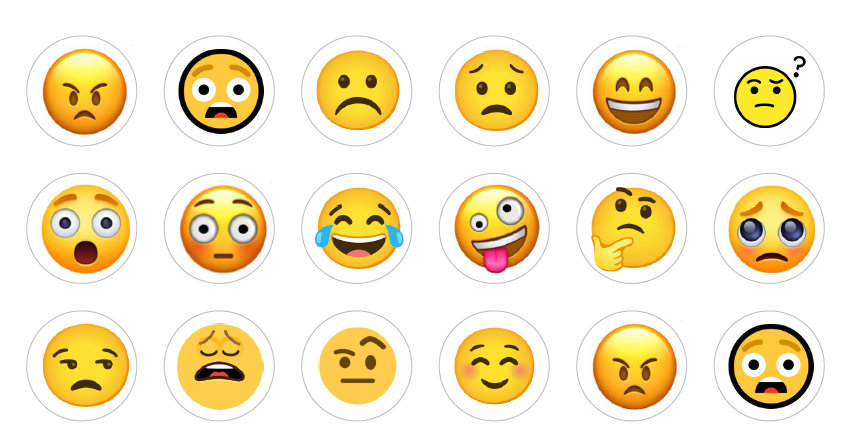
We have a lot of different words to label our emotions. I found several sources, including the Berkley Wellbeing Institute and 7ESL, that list over 250! Take a look at a feelings wheel sometime and notice how many different ways we have to express the six basic emotions. That’s a lot of vocabulary for an English language learner to master! Fortunately, I know a couple of games to make the practice more fun.
How Do You Feel Cover Up
I first introduced this emotions cover-up game a few years ago in the post, How Do You Feel. Since then, it’s been given a facelift with all-new emojis. The basic premise of the game remains the same; students try to be the first to cover their board. Students can cover a space on the board by either rolling a 10-sided die or by spinning a spinner (my students love using the CD-Spinners my father designed and built for me). The student then locates the space with the corresponding emoji. If the space is not covered, the student states a sentence naming a situation that leads to the given emotion. He/she then covers the space with a card that names the emotion, and the second player takes a turn. If the space is already covered, the turn is forfeited.
Emotions Clash!
I am still amazed at how much my adult students love Clash! and Sliding Sorts. Initially, it is always the same. They look at the toilet paper tubes, milk jug lids, and empty squeeze bottles. Next, they look at me like I am insane. However, after hearing the directions and watching a demonstration of how to play, they become less skeptical. Finally, after they begin playing, they start laughing and always end up asking to play again.
Clash! Is a simple game to play: line up toilet paper tubes labeled with various emotion words (you can download the labels I use under the picture). If you line the tubes up down the middle of the table, you’ll be able to have two different groups playing at the same time. Give each student (four total if you’ve lined the tubes up in the middle of the table) a set of milk jug lids with emoji labels (again, mine are available to download below the picture) and an empty squeeze bottle (I use empty dish detergent or honey bottles that I’ve sent through the dishwasher but you can also buy bottles). When you say go, students race to be the first to “blow” the emoji milk jug lids against the corresponding labeled toilet paper rolls. Only the first of each pair to match the lid to the label will receive the point, so students have to be both fast and accurate. It’s a ridiculous game but one that’s incredibly fun.
Conclusion
Next time you need to practice vocabulary for talking about emotions with your students, I hope you’ll give one or both of these games a try. They are a big hit with my students, and I suspect yours will like them as well. Happy teaching, everyone!


